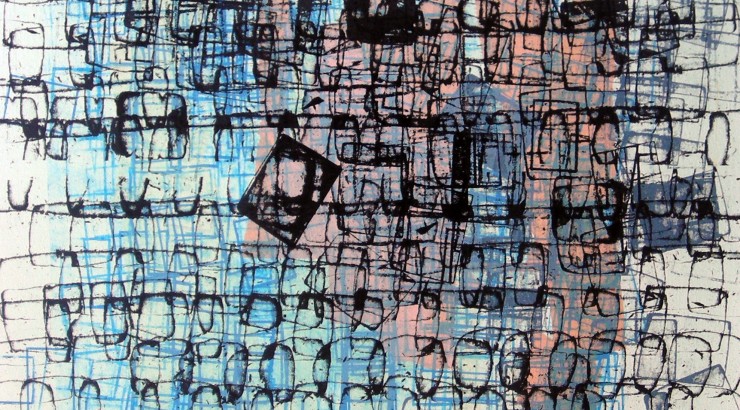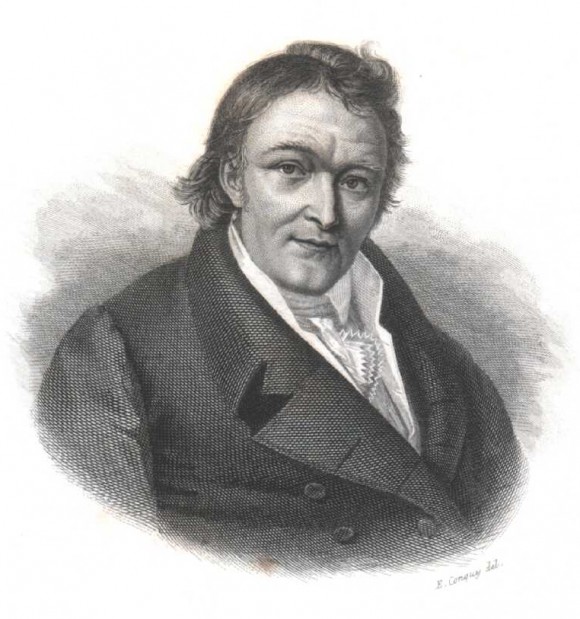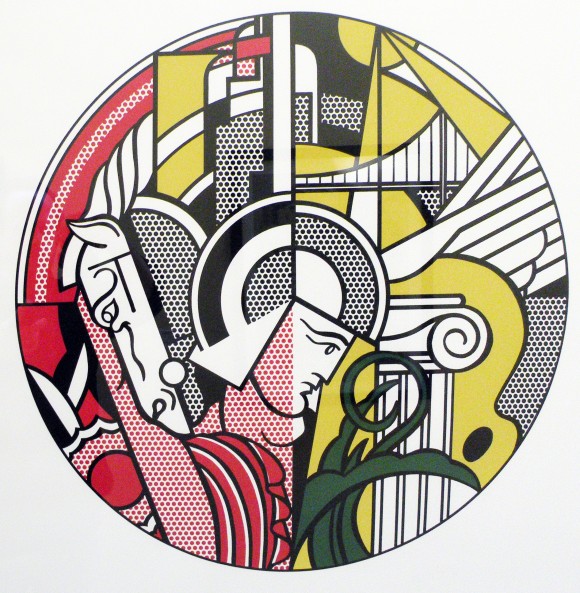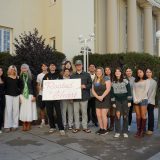Let’s Look at Lithography An Introduction to the Medium
January 18, 2016
Upon browsing the Escalette Collection, one might begin to notice a strange trend in media: lithography. Everybody’s doing it; from Ann Hamilton to Roy Lichtenstein, the medium seems to be a favorite. But what exactly is a lithograph? And how on earth do you make one? Let’s take a look!
Lithography, a fairly young medium in comparison to traditional methods of painting and sculpture, began with a German playwright named Johann Alois Senefelder in 1796. Senefelder had fallen into debt, and in an effort to print the play he had just written, began to experiment in search of his own printing method. The playwright started with a known etching technique utilizing a greasy, acid resistant ink on smooth, fine grained limestone, and through some exploration he realized that one could print directly from the stone. The process relies on a fairly simple relationship in chemistry: grease and water do not like mixing with each other.
Traditional lithography, like that used by Senefelder, utilizes a range of materials. The limestone slab is the printing surface, but various drawing materials and chemicals are needed to complete the process. The artist begins by drawing on the stone with either lithographic pencils or crayons. What differentiates lithographic pencils and crayons from regular pencils and crayons is their high content of grease that makes them much oilier and allows the artist to build up layers– in a sense drawing becomes almost sculptural. This initial drawing is known as the “first etch.”
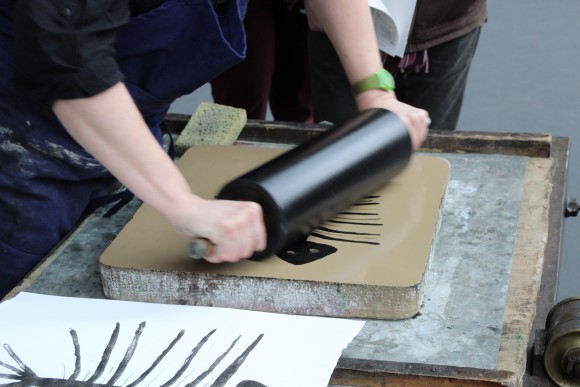
An artist working on a stone slab: “Salon du livre ancien et de l’estampe 2013 013” by Lionel Allorge – Own work. Licensed under CC BY-SA 3.0 via Wikimedia Commons
After making the first etch, the drawing material is then removed by wiping the stone with a mixture of talc (talcum powder) and rosin (a form of resin) to prep it for actual etching. Gum Arabic (a natural gum made of the sap of the acacia tree) is then applied to the stone to establish the negative space of the drawing; the artist wants the white areas to remain white and not receive the ink. After that, acidified gum arabic is applied over the gum arabic to further bond it with the stone, this is applied by softly wiping it on with a sponge. Next, more gum Arabic is applied to reduce the quantity of acid that is on the stone since that can disrupt printing. Cheese cloth is then used to buff the gum arabic into the stone. Lithotine, a greasy solvent/refined turpentine made especially for this type of print making, is then applied to the stone to further remove the drawing. After this the drawing material is replaced with asphaltum, which is thinned with lithotine, to create a base that will receive the ink from the roller. Asphaltum is used because when ink is added it is essentially grease sticking to grease. After this, the surface of the stone is wetted and ink is immediately applied. The ink is repelled by the water all along the negative space of the surface, but it is received onto the etching where the asphaltum has been applied. The first initial runs through the printing press work to push ink into the etching on the stone rather than make actual quality prints. In fact, it usually takes about four to six prints to get the ideal image.
Times have changed however, and nowadays many artists have transitioned to using aluminum or polyester plates when creating lithographs instead of limestone slabs. The polyester plate is the easiest and least toxic method of them all because the artist is able to draw with a ballpoint pen rather than litho pencils or crayons and cut out some of the chemicals needed for the limestone process. The plate is still etched with gum arabic, but lithotine is taken out of the equation. The ink used in print making has to be mixed to a stiff consistency, and that is why magnesium carbonate is added to it to toughen it up. After rolling on the ink, paper is laid down facing up and the polyester plate is placed face down on top and the two are then rolled through the printing press.
Lithography is an artist’s best friend because it is able to capture the exact mark of their hand– it is not just an attempt to transfer the image that they have created, but rather a way of creating an exact record of their mark making. Printmaking allows artists many freedoms like the ability to mass produce works or the option to add various colors to their prints using layering and different inks. The extreme accuracy and clean finish of lithography can make works appear to be almost machine generated, but printmaking is a labor of love and a true display of the artist’s dedication to their craft.
